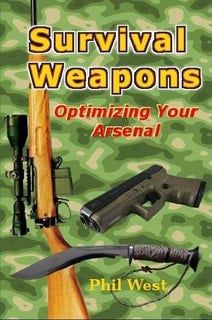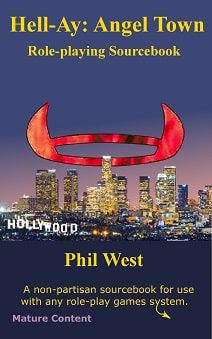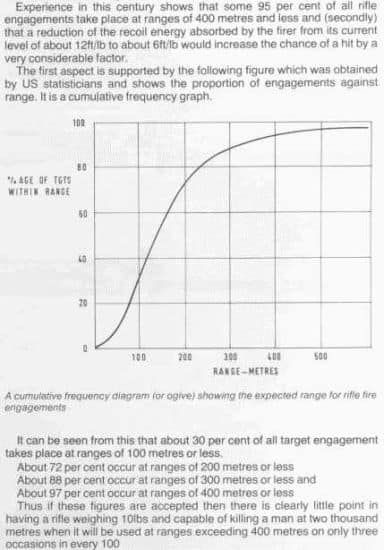By the Author of the Scrapboard : | |
|---|---|
 | Attack, Avoid, Survive: Essential Principles of Self Defence Available in Handy A5 and US Trade Formats. |
 | |
 | Crash Combat Fourth Edition Epub edition Fourth Edition. |
 | |
 | |

Since I wrote the first version of this article I've acquired a 1976 copy of Jane's Infantry Weapons. This makes the statement that engagement range is not just limited by visibility but also the soldier's ability to identify and hit the target.
On page 139 of this book is the cumulative frequency graph shown on the right.
This graph was introduced on page [19] in 1975 edition of Jane's Infantry Weapons, where it is explained “the evidence to support this comes from records, unit diaries, recollections and the development of operational research as a practical, working, useful science”.
The graph shows that 72% of rifle shots are made at 200m or less and that only 3% of shots are made beyond 400m.
A similar chart for MG engagements was also given and can be viewed by clicking this link. This chart is not quite so useful since no distinction is made between bipod fired weapons and weapons fired from vehicles or tripods. The context in which the chart is presented is in a discussion on the use of squad-level LMGs.
Recent actions in Afghanistan have called into question both the terminal effects and long-range performance of the 5.56mm round. The issue of terminal effects will be dealt with in this article. This one addresses long range combat.
The 5.56mm is termed a “intermediate” round, which is a round that is designed for shooting at ranges of 500m or less. The design specification of the M855/SS109 did call for an effective range of 800m but we'll deal with that issue a bit later.
There are times when a soldier may have the opportunity to fire at ranges greater than 500m. However, there is a difference between sniping at an unsuspecting foe or suppressive fire at an area and combat shooting. In combat shooting the enemy is aware he is a target and acting accordingly.
To understand intermediate rounds, let's put them in their historical context:
The idea of intermediate rounds (optimized for 500m or less) is usually portrayed as a German wartime concept. In actuality, the contract for development of the 7.92x33mm round was placed in 1934 and it was apparent during the First World War that shots at more than 400yds were very rare. The usual explanation you'll see for a 500m range being selected is that in most of the world visibility and terrain prevents shooting at greater ranges. Since machine-guns and snipers routinely shoot at greater ranges in the same environments, this accepted and often repeated explanation is obviously wrong!
By 1942 the German army was very familiar with alpine and desert fighting and it is very “un-Germanic” that these experiances would not have been figured into development of the intermediate rounds.
My theory is this.
It is Tactical Accuracy not visibility that is the limiting factor.
A 7.92mm or lesser bullet takes around a second to reach 600m. In that time an AWARE target can sprint 5-9m: you don't know which direction he will take and he'll often be darting between cover. Your chance of hitting him with a single aimed-shot is virtually random.
I think most shooting was less than 500m because most German riflemen knew there was little point shooting beyond this unless the foe didn't know you were there or you could fill an area of about 10m with bullets.
A couple of friends confirm this with more recent experiences:
“DOD did the same kinds of studies for all kinds of terrain, same result/conclusions; usual infantry engagement was 300 yards or less (didn't matter what you were armed with, typical infantry could not get hits at greater than 300m unless shooting volleys in mass or using machine-guns.
I was a former USMC National Match M-14 shooter and I can testify that even then the average infantryman was not going to get hits beyond 300m.) If you are under 1000m you call company or battalion mortars or MGs or Mark 19 (full auto grenade launcher), artillery and air strikes are for better targets that are further off. The point is correct on not firing individual weapons at longer than 300m, you won't kill them and they can call fire down on you!”
An ex-ranger
“If you sight a target element that far away it is much more tactically feasible to call in artillery fire or an air strike thus saving your infantry the suicidal need for a half mile movement to contact. If you don't have fire support it is better to get closer before engagement to limit your targets tactical options. 500 to 700 meters gives them room to do just about anything, especially if you have let them know you were there by shooting at them from that distance. They may HAVE fire support!!”
By 1945, the Germans had the tools they wanted for infantry and considerable experience knowing what worked. The best equipped squads would have one or two MG42s for their main offensive firepower. Most soldiers would have an SMG or Stg for maneuver/CQB/self defence, but in most photos you'll see there was always at least one squad member that retained the Kar 98 rifle.
You see this in “Cross of Iron” in the warehouse scene: while the guys with automatic weapons keep the Russians back, the rifleman takes his time and makes his shots count. Modern assault rifles can offer both medium-range precision fire and close-range automatic fire.
It is also possibly worth reflecting that the Germans never saw their intermediate round as a load for machine-guns: it was a dedicated rifle round.
I used to advocate that mountain units should be issued 7.62mm rifles like the FAL for “more range” but now I begin to rethink.
There is not much point having a round that hits harder at longer ranges if you are not going to hit the target.
The 5.56mm can hit a man-sized target and kill him out to 800m. Shots longer than this are best left to experienced snipers or riflemen with particular aptitude for long-range shooting.
Combat shots are still going to be taken at ranges of 500m or less. If you are not shooting at 1000m, a 20-24" barrelled M16 is less of a burden to carry up the mountain, and is sufficient for the rare times a shot over 500m is made.
From this it can be seen that rifle-fire is of little practical use against an aware foe at long-range, no matter what calibre you shoot.
Possibly the only relevant advantage the 7.62x51mm has over the 5.56x45mm is that it bucks the wind better.
Using full-power rifle may in fact make your forces less effective at CQB and shorter-range engagements where rifles are most needed.
The point is best illustrated by the following scenario:
Your platoon is taking a rest when you spot an enemy unit on the other side of the valley, about 600m away.
The enemy has not spotted you, but their current course will take them towards an aid station and command post.
You have to engage them now and there is no way you can manoeuvre closer in time.
Since the enemy is unaware, and moving in a predictable course and speed, both machine gunners and riflemen dial the range into their sights and take aim.
As the machine guns open up, the enemy is also hit by a volley of rifle-fire.
Several enemy are hit.
If the enemy is shocked or particularly dopey, there may be time for a follow-up volley. More likely is that the survivors start diving for cover and firing back. Now is the time for intelligent rifle use.
The riflemen lower their weapons since they know that shooting at such fleeting targets at such ranges is just a waste of ammunition. Instead they hold their fire and don't give the enemy any muzzle flashes to fire at.
The machine-guns now take on the brunt of the firefight, and the riflemen's main task is to keep these fed and to spot targets for them. Some of the riflemen may help pin the enemy in position with occasional semi-automatic suppressive-fire.
Note that the rifles are only used for shots where there is a high hit probability (the opening volley) or when actual hits are not necessary (suppressive-fire).
The enemy is pinned and has taken losses: ;what to do with him now?
In many armies, the platoon or even the squad carries commando mortars that can drop bombs vertically on a position, even if it is 700-1,300m away. The US army lacks such organic firepower.
Given the terrain and distance, it may not be practical to manoeuvre part of the platoon into a flanking position. The only choice is to call in fire-support that may not be available or air-support that may not arrive in time. This, of course, is assuming that the radios are working in such terrain.
The point is this. Rifles of any calibre are of little practical use for longrange combat shooting.
They can snipe at an unaware foe, or lay down suppressive-fire but the main killing systems at long-range are area weapons such as mortars and machine-guns.
Many WW2 veterans observed that German soldiers seldom used their rifles and preferred to let the machine-guns do the work. In fact the German rifleman only carried 90 rounds of ammo in his webbing, and this was sufficient since he used his weapon judiciously.
I have a TOE for a 1939 German motorcycle squad that is informative. This 12 man unit had two machine-guns, and no less than four men designated as “assistant machine-gunners” (ammo-carriers) who were armed only with pistols.
This draws us to the following conclusions:
If troops have a more realistic understanding of the capabilities of the rifle they will use their ammo more efficiently.
In terrain where long-range firefights are to be expected this means the unit can carry less assault rifle ammo and greater quantities of more useful mortar rounds and machine-gun belt.
The solution to long-range combat is not “more rifle”, but less.
Having established that it is hit probability rather than visibility or round power that is the limiting factor in rifle engagements, we can return to the question as to whether a unit of mountain infantry should be armed with 5.56x45mm or 7.62x51mm rifles. Both options have their merits.
5.56mm weapons tend to be lighter and this is by no means a small consideration in physically demanding terrain such as the mountains.
For a given weight, a larger number of 5.56mm rounds than 7.62mm can be carried and this may be significant if we accept that the main role of rifle-fire will be suppression and harassment.
On the other hand, a 7.62mm that connects with its target will have greater effect than a 5.56mm at longer ranges but this can only happen if you can hit the target, and as discussed above, this is a big IF in many situations.
The 7.62mm round deals with wind-effects at long-range better than the 5.56mm.
One of the main selling points of the 7.62mm rifle is that it uses the same ammunition as the squad's GPMGs. For mountain operations, lighter weapons such as the Negev NG-7 or the Mk. 48 have obvious advantages.
7.62mm MGs are a far more effective long-range weapons than rifles and it simplifies logistics if the rifles and MGs in the squad use the same round.
My personal feeling is that issuing 7.62mm rifles to conventional infantry units in mountainous terrain is not a major priority. Ensuring they have access to enough 7.62mm MGs should be higher up on the “to do” list.
It does make sense for dedicated mountain warfare units to be armed with 7.62mm rifles to simplify squad logistics.
Even better, issue battle-carbines and lightweight GPMGs chambered in the 6.5mm Creedmoor round.
By the Author of the Scrapboard : | |
|---|---|
 | Attack, Avoid, Survive: Essential Principles of Self Defence Available in Handy A5 and US Trade Formats. |
 | |
 | Crash Combat Fourth Edition Epub edition Fourth Edition. |
 | |
 | |